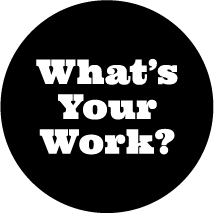Goals
Work SMART!…
“Rowing harder doesn’t help if the boat is headed in the wrong direction.”
Quick, think of a goal you have. Now imagine you’ve achieved it. What does that look like?
If the answer to that question is clear to you, congratulations: you are one step ahead of the majority of people.
For many of us, we fall short in pursuit of our goals because we lack a clearly defined end-point. A common example of this is the decision to “get in shape.” What does that actually look like? Does that mean losing weight? Building muscle? Being able to run a 10k? How fast? How often?
This is one of the factors that separates a professional athlete from someone exercising to “get in shape.” A long distance runner looking to take part in a marathon has a clearly defined target: to run 26 miles without stopping. This makes their goal both specific and measurable. These are two aspects of a learning framework that can help you set achievable targets: SMART goals.
SMART stands for:
Specific - you know exactly what success looks like. For instance, if you’re learning the guitar. Do you want to play “Happy Birthday”? Or pass a Grade 8 music exam?
Measurable - you can keep track of your progress. This allows you to break the learning journey into milestones; for example, if you want to be a black belt martial artist, you can track your progress through the other belts you pick up along the way.
Achievable - your goal is something you could actually reach. Do you have the time or resources to achieve this goal? What is the gap between where you are and where you are aspiring to be? If you are starting in your 30s, it may be too late to become a Premier League football player, but maybe you could be the star of your Sunday league team.
Realistic - this is something within your control, that can be achieved simply by changing your habits? By knowing what your skill set is, what you’re willing to do and what’s available to you, you can make sure your target is something you’re really motivated to pursue and something you have the time and energy for.
Time bound - you have a clear time frame to achieve your goal. For example, “I will get my promotion within 12 months.” Now you have something to check your progress with along the way. 3 months in, how close are you? Are you nearly there? Do you need more time? Then at the end of that period, you can reassess. Did you achieve the goal or not? Did you give yourself an accurate time frame? This will also help you get more accurate with the next SMART goal you set.
So if you’re working on something meaningful to you, step back and ask yourself: am I being SMART about this? How can I use this framework to make my dream a reality?
All the best with your exploration.

